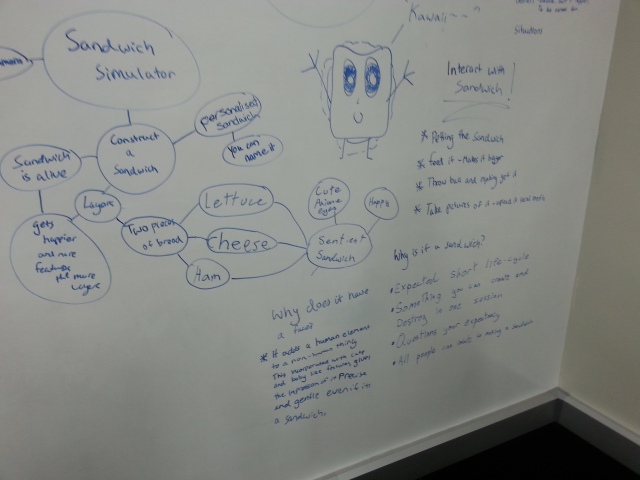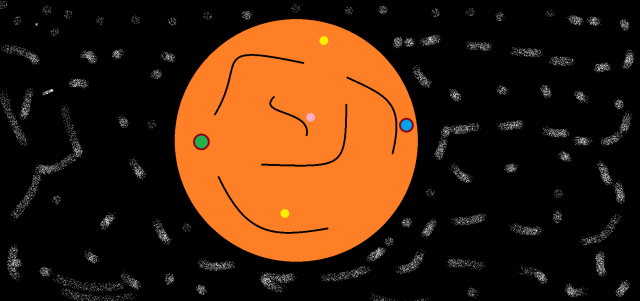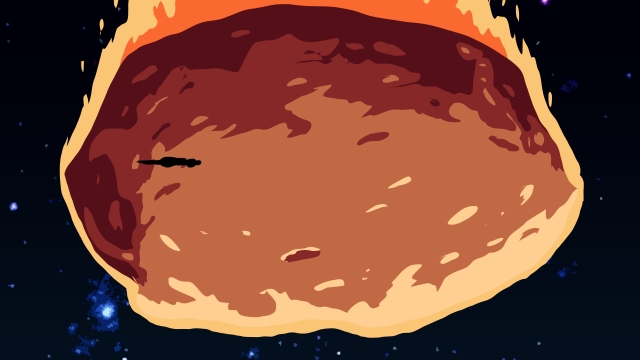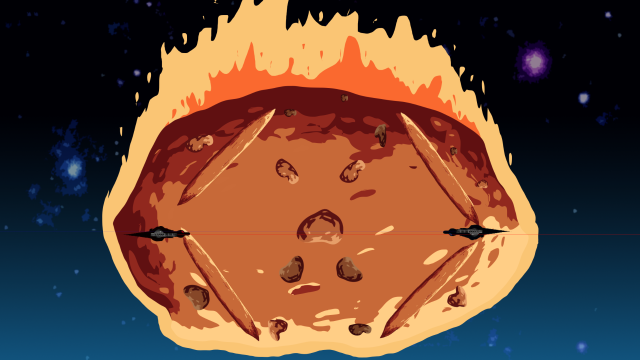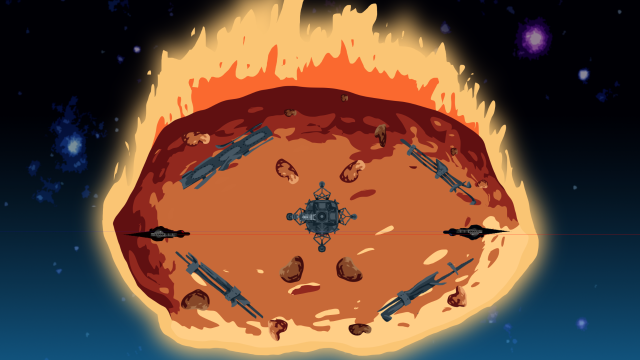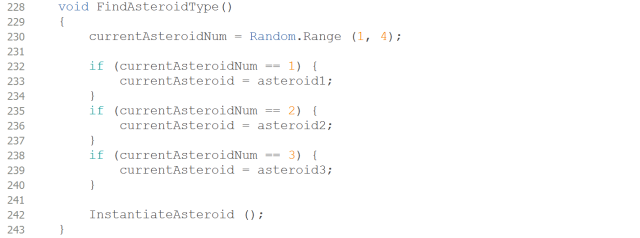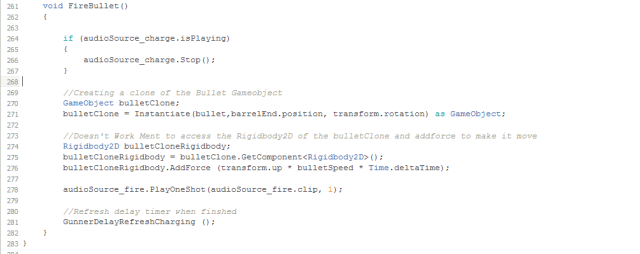What went Right?
Aesthetic Design – The look and feel of our game was by far one of the best aspects about it. Though closer communication and working with out artists and animators, making sure they had the proper information so they could then deliver the assets we needed. It ended up really working out and helped set the scene for this game and give that look and feeling of falling though outer space, on a flaming asteroid, while trying to kill each other on cybernetic dinosaurs.
When choosing which theme to go off (tanks on battlefield or cyber-dinosaurs in space), we needed to ask ourselves:
- What would be more difficult to accomplish?
- What is more appalling to use?
For both, the answer was cyber-dinosaurs in space by everyone in the team. These specific questions were ask because the more difficult something is to complete, more mistakes we will be make, more issue arrive and more we would learn from them and how to solve them in the future. Choosing something that’s more appealing to us also keeps everyone interested and motivated to keep going.
How this worked out was, like I said in the beginning, we started working more closely to the animators involved with the project. Actually having a team meeting with them on campus, and Skype, so we could ask questions on why nothing was being done and how to solve it. This then lead us to creating both an animation brief and asset list, with some help from the animators, for them to work off. This in return allowed us monitor and make sure the assets our animators were making were what we wanted and followed the style and structure of our game.
How I plan to do this in the future, create an asset list and animation brief as early into our development cycle as possible and ask the animators involved whether the information presented is actually relevant. The biggest issue this time was we left it way to late and all the information from our current documentation didn’t help someone trying to figure our the dimensions of our players, relative the the asteroid. Along with this a team gantt chart or trello would also be useful in managing who is doing what.
Driver Role – The driver is meant to control all the mobility of their team within the game and their main focus is running and dodging around level away from enemy fire. With this in mind, I believe the driver role was a success.
We designed the driver to be always trying to move out of the way and get the a safer location. However dispute how useful they are, in terms of mobility, they are also completely vulnerable and have no main method of defending themselves except from running. This is were cooperation between them and the gunner comes into play as the driver needs to gunner for protection and to hit the enemy team. So now movement for the driver becomes more of what is more useful for my gunner.
How this worked is we, first, made both the driver movement and rotation speed relatively fast (cross the map = 6 seconds) and (full 360 spin = 5 seconds). We did this because it allowed the driver to cover more ground and allows the driver to get into better positions for the gunner instead of being backup into a corner and the game turning into a camping match. Secondly we stopped the driver from influencing the gunner cannon rotation whenever they rotated themselves. This was done to prevent the gunner from simply relying on the driver from aiming and removed any form of cooperation and teamwork in our game.
How I plan to do this in the future, when it comes to roles like this, making sure that no one role is dominating or influencing all of them. This looses any form of cooperation in the game as one player could do all the work and other does nothing and feels no needed.
Gunner Role – The gunner is meant to control all the damage of their team within the game and their main focus is predicting, aiming, timing and shooting the enemy ether directly or though an awesome trick shot. With this in mind, I believe the gunner was a success.
We designed the gunner to be always trying to hit the enemy though various means, ether directly at the enemy or bounce of walls and rocks. However dispute how useful they are dealing damage to the enemy. They are completely stationary and have no way of moving out of the way of enemy fire. This is were cooperation between them and there driver comes in as the gunners needs to driver for positioning and moving out of the way of the enemy.
How this works is, firstly, we made the gunners rotation independent from the driver so they are forced to rotate the cannon themselves and no rely on the driver. Secondly, their rotation is now instant instead of a slight delay. We changes this as the gunner is meant to be challenging not difficult were they have to constantly predict, aim and time when they are going to shoot to hit the enemy, which is challenging. Applying a delay to the actual rotation will removes these aspects as the gunner will always be steps behind the enemy driver, which is difficult, and therefore becomes more efficient to just spam shots.
Thirdly, we applied a delay to shooting the cannon in the form of a charge. We did this because, unlike rotation, this further enforces the necessity of timing when the gunner is going to shoot and working with the driver in order to make sure that every shot counts, we also moved the charging bar away from the top of the screen to on the actually cannon design itself. We did this because the gunners attention is always focused on the cannon and where they are aiming so this allows for large visual feedback with out bring the gunners attention away. Lastly, we applied a laser sight to the gunner, we did that as it makes it easier for the gunner to see exactly where the bullet is going to go and therefore be able to more easily set up a and predict trick shots on the enemy.
How I plan to do this in the future, Don’t apply a delay to something that requires a lot accuracy in order to do right. Always keep in mind whether if we want something that is Challenging or Difficult and tailor it towards it.
Level Design – Our level design needed to incorporate many ideas that would both enforce cooperation between the driver and gunner but also allow both roles to play effective. The level also needed elements that would dynamically change how the level is precised by both roles and give plenty of opportunities for expected and unexpected success and failures. With this is mind, I believe our level design was a success.
How this worked is we, first, made sure that the driver wasn’t restricted by space and that there as plenty of room in order for them to move around. We did this by spacing all the objects away from the center and only have one major object there, to prevent both gunners from shooting each other the second they spawn and gives time to plan out there attack, and scattering the rest away near the edges and at choke points. This gives the driver lots of rotation and dodging room without worrying what they will hit or how vulnerable they will be if they tried. Secondly, We needed objects for the gunner to trick shot bullets off, though testing we came up with these:
- Four, solid, 45 degree angled walls near the rounded edges of the asteroid. These don’t move and act as a good starting point to trick shoot off as they are, though there design, easy to see where the bullet is going to go and, thanks to there arrangement, can circle around the map allowing for unexpected hits and dynamics between the bullet and the other “movable” objects on the level.
- Various shaped, movable rocks throughout the level, distributed nearly evenly across both sides. These rocks can be pushed by both the driver and gunner and can bounce bullets. Due to these rocks are constantly moving, it is constantly dynamically shifting the level design itself and with that changing the priorities of both the driver and gunner and what they are going to do next.
- Lastly, the meteor system was a way of incorporating level based elements off the intended level itself (asteroid). It worked by spawning large rocks that would move done on ether side of the screen at different times. We did this because it allows for new “outside the box” thinking when it comes to trick shots and for unexpected success and failures to accrue, which is what we want.
How I plan to do this in the future, a major help was defiantly the constant iterating we did with our level and seeing positives and negatives of each, breaking them down and seeing what could be made of them in a new iteration for the level and how could we use them in order ways (e.g. Meteor system – Movable rocks on the level itself).
What went Wrong?
The Concept of “Teamwork” – Dispute how we might have put these different systems in and how we designed our game. One of the biggest aspects about it was meant to be it focus on teamwork between the driver and gunner. Unfortunately this didn’t turnout the way we wanted it.
What happened was, teams weren’t winning based of there skill and cooperation with each other but more of waiting and to see who gets killed by friendly fire first. It was evident that gunners liked to simply spam shoots towards the enemy without taking into consideration there own position or the spots around them and in doing so added an extra level of risk to the driver as now they had to look out for there own gunners shots as well. However with drivers, it was evident that they just wanted to run around the map, pushing all the rocks and charging the enemy directly, This is fine but it doesn’t show any form of cooperation between both the driver and the gunner.
Why did this happen, well one of the main issues was there was no real reward or incentive from the start for both the gunner and the driver to work together. The only thing we were using to try an get both roles to work together was to try beat the enemy team but this then lead both roles to do completely different things independent to each other’s goals. Another issue was the gunner constantly spamming shoots around the map, which lead to most of their teams deaths, without penalty or someway to incentive them to stop.
How do I plan on doing this right in the future, there needs to me more incentives for both roles to work together, in terms of the gunner, adding an ammo system with slow recharging shots could have been a potential fix as, if the gunner is limited in their shots then it could cause them to be more patient and timing there shots and cooperating with their driver to get into a position to make every shots count. A score system could also be used and points can be allocated based on tricks shots, this could work as the more effective trick shots can only happen if the driver understands where they need to go and what rocks need to be moved.
Visual Feedback – This relates to only one piece of visual feedback but it caused quite a lot of confusion. I’m talking about when ether you hit or get hit by a bullet and what happens, in short nothing which caused a lot of confusion about why a team died without any notification or reason.
Why did this happen, Originally I was planning on incorporating a large visual explosion whenever the bullet hit a Cybersaur, however due to how late we were into development and me having no real knowledge on how a particle system works. I was unable to get it implemented in time and not having any form of suitable placeholder just caused me to leave it empty.
How do I plan on doing it right in the future, Firstly, would be to plan ahead on all the different visual and audio feedback we will need for the game and finding suitable placeholders for each just to use to use as backups encase something like this happens again. Next would be planning time into learning asking peers and facility members on how do I implement a particle system and setting up with the correct conditions, Getting some outside help would have been useful and possibly could have lead some form of feedback being placed in instead of nothing.
My Own Performance?
In terms of my own performance, I felt like I contributed a lot to our team in both the coding and design aspects for our game. As team leader my management of each member of the team and keeping track of what everyone was up too could have been better, especially for the animators and audio people involved as I never used a gantt chart or trello and only relied on word or mouth to see how everyone is doing (which was a terrible idea). I managed to get most of my tasks down on time however issues started when the I was unable to catch on those old tasks in time which left a lot of undone stuff at some major points during our development.
What happened was, I didn’t understand what was really needed in order to properly manage a team. I relied to heavily on word or mouth and Skype messages in order to get my information from my team and didn’t properly set up team meetings.
How I plan on doing this right in the future, Firstly, definitely setup a team gantt chart will a task breakdown with everyone apart of the team on it. This will help manage where all the tasks are at over the development cycle, secondly would be to set up a trello for the team as well to manage everyone’s tasks on a much more day-by-day level and see what has gotten done then.
Overall the project was a success but like every other project there can always be improvements. For us, these improvements would include thinking of new ways to make both the roles work together instead of more independently and manage what everyone is doing more closely so things can get done on time.





